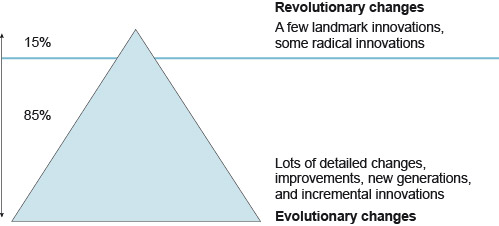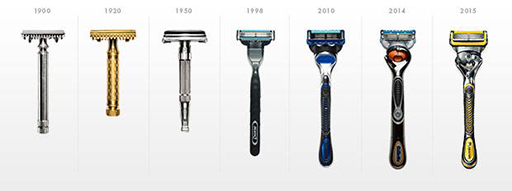10.2 Radical vs. evolutionary change
In much management literature the term continuous improvement is used to describe the accumulation of small incremental changes that collectively amount to something quite significant.
In general though, the importance of this kind of evolutionary change, tends to be underestimated in the West; and most public and press attention tends to focus on ‘glamorous’ big breakthroughs. This is despite cumulative gains from incremental improvement being critically significant and radical innovation being the exception rather than the rule as Figure 23 indicates.

Take for example the Gillette Razor. Since it was first launched in the early 1900s, the Gillette Razor has been consistently adapted and updated based on changing consumer needs and new technologies.
While in themselves each of these changes might be evolutionary in nature, the cumulative effect is potentially quite revolutionary, as shown by dramatic changes to the Gillette Razor over the last century (Figure 24).
While each of these iterations and updates to the Gillette Razor might have entailed subtle improvements at the time, something much more radical in the form of disruptive innovation is needed.

